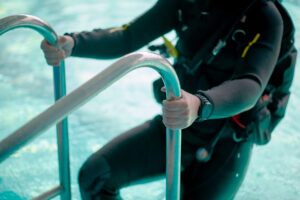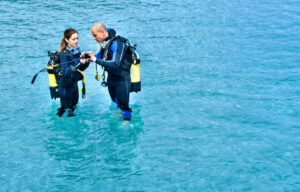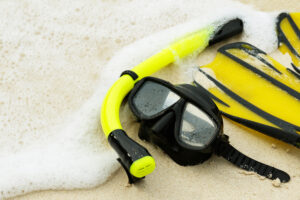What is a J Cylinder?
A J cylinder is a type of scuba diving tank known for its distinctive size and capacity. It is a critical component of a diver’s breathing apparatus, holding compressed air that allows for underwater respiration. These cylinders are integral to both recreational and professional diving, providing the necessary air supply for extended periods underwater. Named after its shape and size, the J cylinder has become a standard in the diving community due to its reliability and capacity, making it suitable for various types of diving activities, from shallow recreational dives to deeper, more technical dives.
History of the J Cylinder
The history of the J cylinder dates back to the early 20th century when the need for a reliable air supply for divers became paramount. Initially, diving equipment was rudimentary and often dangerous, with early divers relying on surface-supplied air through hoses. The development of self-contained underwater breathing apparatus (SCUBA) systems revolutionized diving, allowing divers more freedom and safety underwater. The J cylinder emerged as a result of these advancements, offering a more substantial air capacity than earlier, smaller tanks.
Throughout the mid-20th century, innovations in materials and manufacturing processes led to significant improvements in the design and functionality of diving cylinders. The introduction of aluminum and high-strength steel allowed for lighter yet more durable tanks, capable of withstanding higher pressures. The J cylinder, in particular, became favored for its balance of size and capacity, providing a dependable air supply without being overly cumbersome.
Key figures in the development of the J cylinder include Jacques Cousteau and Emile Gagnan, whose pioneering work in SCUBA technology laid the groundwork for modern diving equipment. Their contributions, combined with advances in metallurgy and engineering, helped establish the J cylinder as a standard in the diving industry. Over the decades, the J cylinder has continued to evolve, incorporating new technologies and safety features to enhance its performance and reliability.
Technical Specifications
The J cylinder is characterized by its specific dimensions and capacity, making it suitable for various diving needs. Typically, a J cylinder has a height of approximately 60-70 cm (23.6-27.6 inches) and a diameter of around 20 cm (7.9 inches). These dimensions provide a balance between capacity and manageability, allowing divers to carry sufficient air without excessive bulk. The capacity of a J cylinder usually ranges from 10 to 15 liters, translating to about 80 to 100 cubic feet of compressed air at standard pressure.
Materials used in the construction of J cylinders include aluminum and steel, each offering distinct advantages. Aluminum cylinders are lightweight and resistant to corrosion, making them ideal for recreational diving in saltwater environments. Steel cylinders, on the other hand, are heavier but can withstand higher pressures, providing more air capacity and making them suitable for deeper or technical diving. Both types of cylinders are designed to meet stringent safety standards, ensuring their durability and reliability under various conditions.
Pressure ratings for J cylinders are another critical aspect, typically ranging from 200 to 300 bar (2,900 to 4,350 psi). Higher pressure ratings allow for more air to be compressed into the cylinder, extending the duration of dives. However, this also necessitates more robust construction and rigorous testing to ensure the cylinder can safely contain the high-pressure air. These specifications are crucial for divers to understand, as they directly impact the safety and performance of the diving equipment.
Types of J Cylinders
J cylinders come in several variations, each tailored to specific diving requirements. High-pressure and low-pressure models are the primary distinctions, with high-pressure cylinders holding more air due to their ability to withstand greater internal pressures. These high-pressure models are often preferred for technical and deep diving, where extended air supply is critical. Low-pressure cylinders, while holding less air, are easier to fill and maintain, making them suitable for recreational divers who engage in shorter, shallower dives.
Another variation of the J cylinder includes those with integrated buoyancy features. These cylinders are designed with materials and shapes that aid in maintaining neutral buoyancy, reducing the amount of weight a diver needs to carry. This integration enhances diver comfort and control underwater, especially during long or complex dives. Additionally, some J cylinders are equipped with specialized valves and fittings that allow for quicker and more efficient air fills, further optimizing their performance.
Comparing J cylinders to other types of scuba tanks highlights their unique benefits. While smaller tanks are more manageable and often used for shallow dives, they do not provide the same air capacity as J cylinders. Conversely, larger tanks can be cumbersome and challenging to handle, especially for less experienced divers. The J cylinder strikes a balance, offering substantial air capacity without sacrificing maneuverability, making it a versatile choice for a wide range of diving activities.
Safety Considerations
Safety is paramount when using J cylinders, as they contain highly compressed air that poses significant risks if not properly handled. Regular inspections and maintenance are essential to ensure the cylinder’s integrity and functionality. Visual inspections should be conducted annually, checking for signs of corrosion, dents, or other damage that could compromise the cylinder. Hydrostatic testing, which involves filling the cylinder with water and pressurizing it beyond its working pressure, is typically required every five years to verify its ability to safely contain high-pressure air.
Common safety issues associated with J cylinders include corrosion, particularly in saltwater environments, and valve failures. Corrosion can weaken the cylinder walls, leading to potential ruptures. To mitigate this risk, divers should rinse their cylinders with fresh water after each dive and store them in a dry, cool place. Valve failures, while less common, can occur if the valves are not regularly serviced and maintained. Ensuring that valves are clean, lubricated, and free of debris is crucial for maintaining safe and reliable operation.
Proper handling and storage of J cylinders are also critical for safety. Cylinders should always be transported with valve covers in place to protect the valves from damage. When storing cylinders, they should be kept upright and secured to prevent them from falling over. Additionally, it is important to avoid exposing cylinders to extreme temperatures or direct sunlight, as this can affect the internal pressure and compromise the cylinder’s integrity. Adhering to these best practices helps ensure the safety of both the diver and the equipment.
Usage in Scuba Diving
The integration of J cylinders into diving gear setups is straightforward but requires careful attention to detail to ensure proper function and safety. The cylinder is typically attached to the backplate or harness of the diving equipment, with the regulator connected to the cylinder valve to provide a steady flow of air. Divers must ensure that all connections are secure and that the cylinder is properly oriented to avoid any restrictions in air flow or movement underwater.
J cylinders play a crucial role in various diving activities, catering to both recreational and professional needs. For recreational diving, J cylinders provide ample air supply for longer, more enjoyable underwater experiences. They are particularly popular among divers who explore reefs, shipwrecks, and other underwater attractions, as the larger air capacity allows for extended dive times. In technical diving, J cylinders are essential for deeper dives and more complex underwater tasks, providing the necessary air supply and reliability for these challenging environments.
Choosing the right J cylinder involves considering several factors, including the type of diving, the diver’s experience level, and the specific conditions of the dive. For example, a high-pressure J cylinder may be preferable for deep or technical dives, while a standard aluminum J cylinder might be sufficient for recreational activities. Divers should also consider their physical strength and comfort, as carrying and maneuvering a larger cylinder requires more effort. Ultimately, selecting the appropriate J cylinder enhances the safety and enjoyment of the underwater experience.
Key Takeaways
Understanding the various aspects of J cylinders is essential for safe and effective scuba diving. These cylinders, with their balance of size and capacity, provide a reliable air supply for a wide range of diving activities. Regular maintenance and adherence to safety protocols are crucial to ensure their durability and performance. By considering the specific needs and conditions of each dive, divers can choose the appropriate J cylinder to enhance their underwater adventures while prioritizing safety and reliability.

















